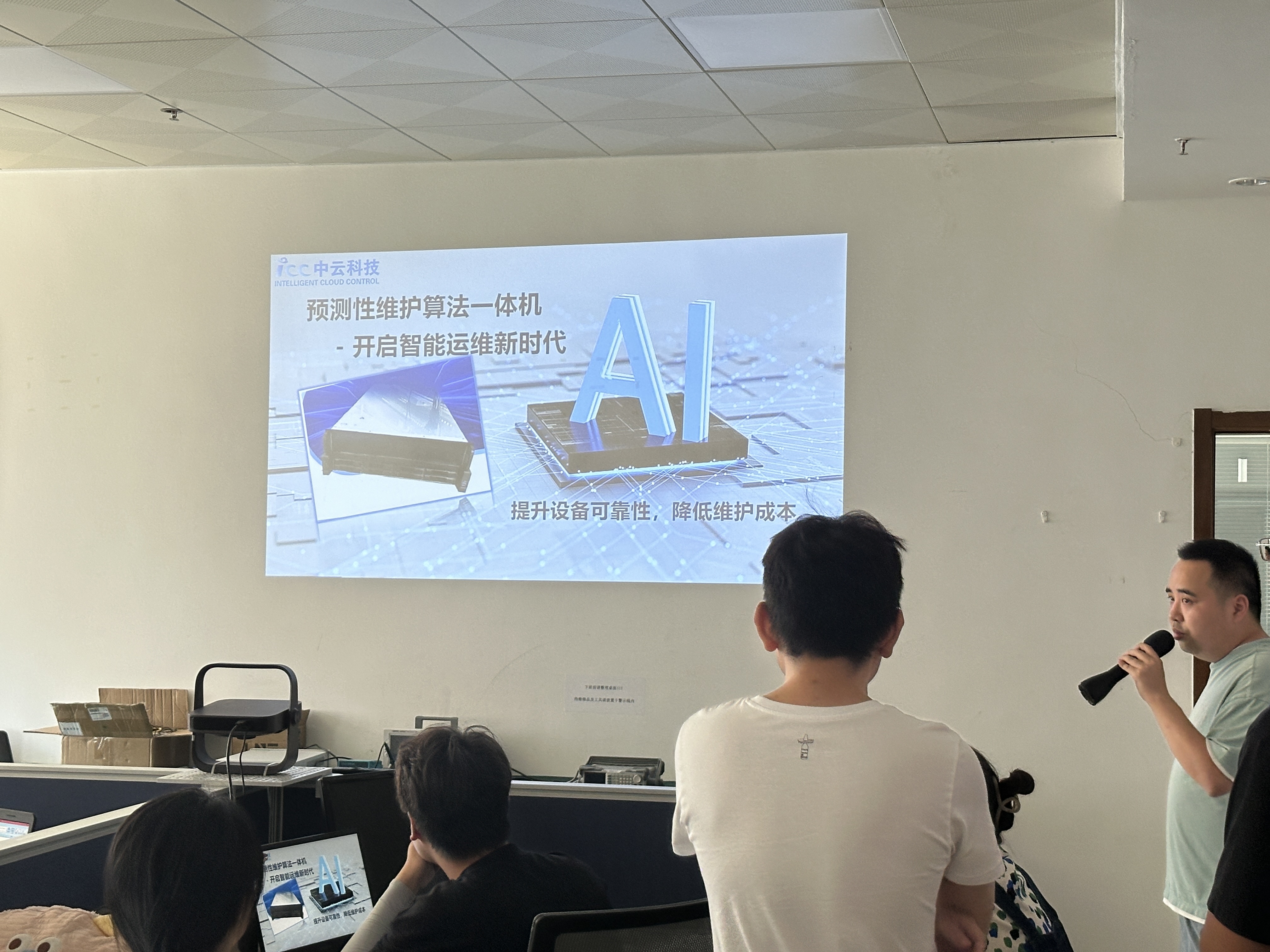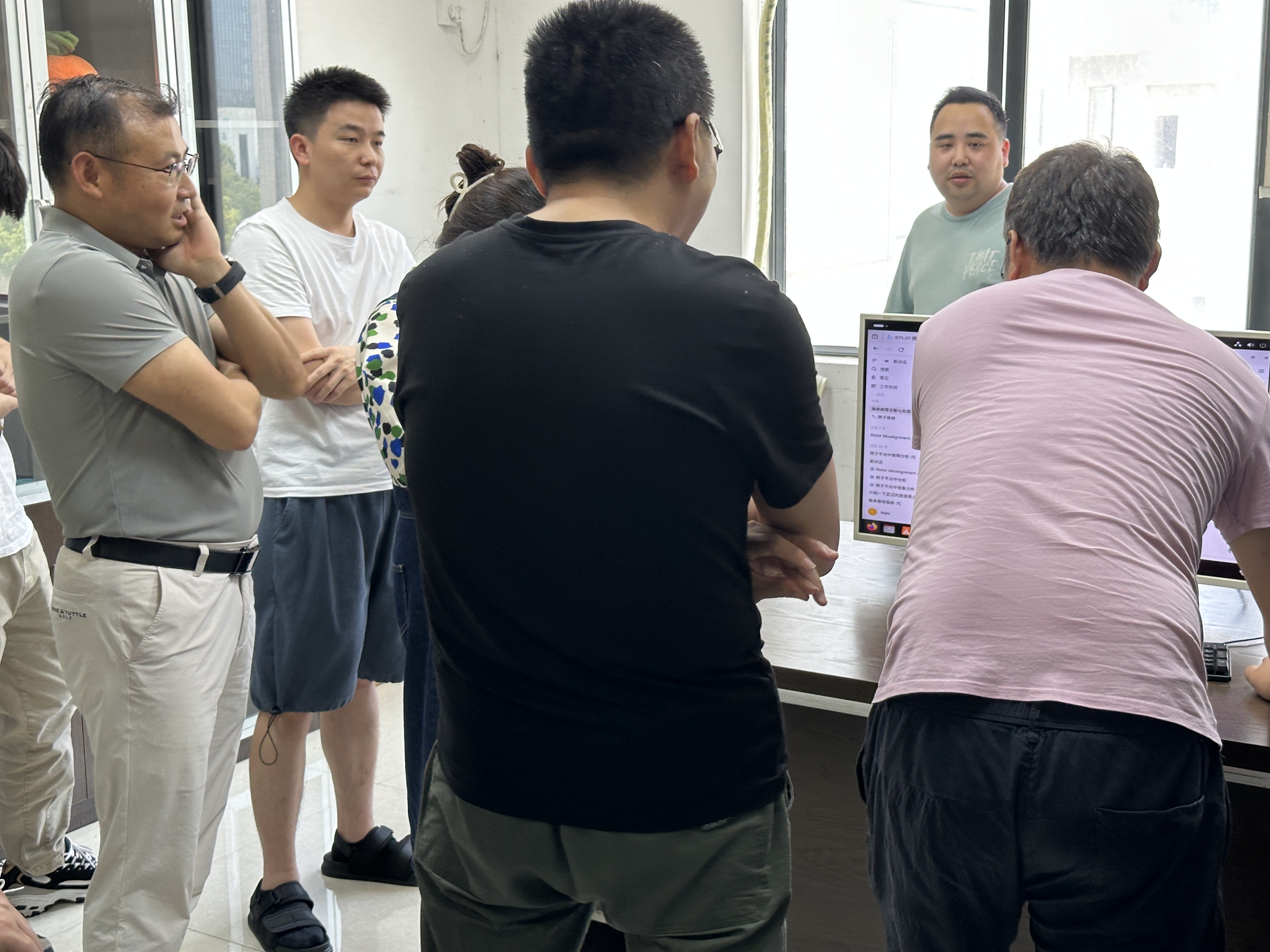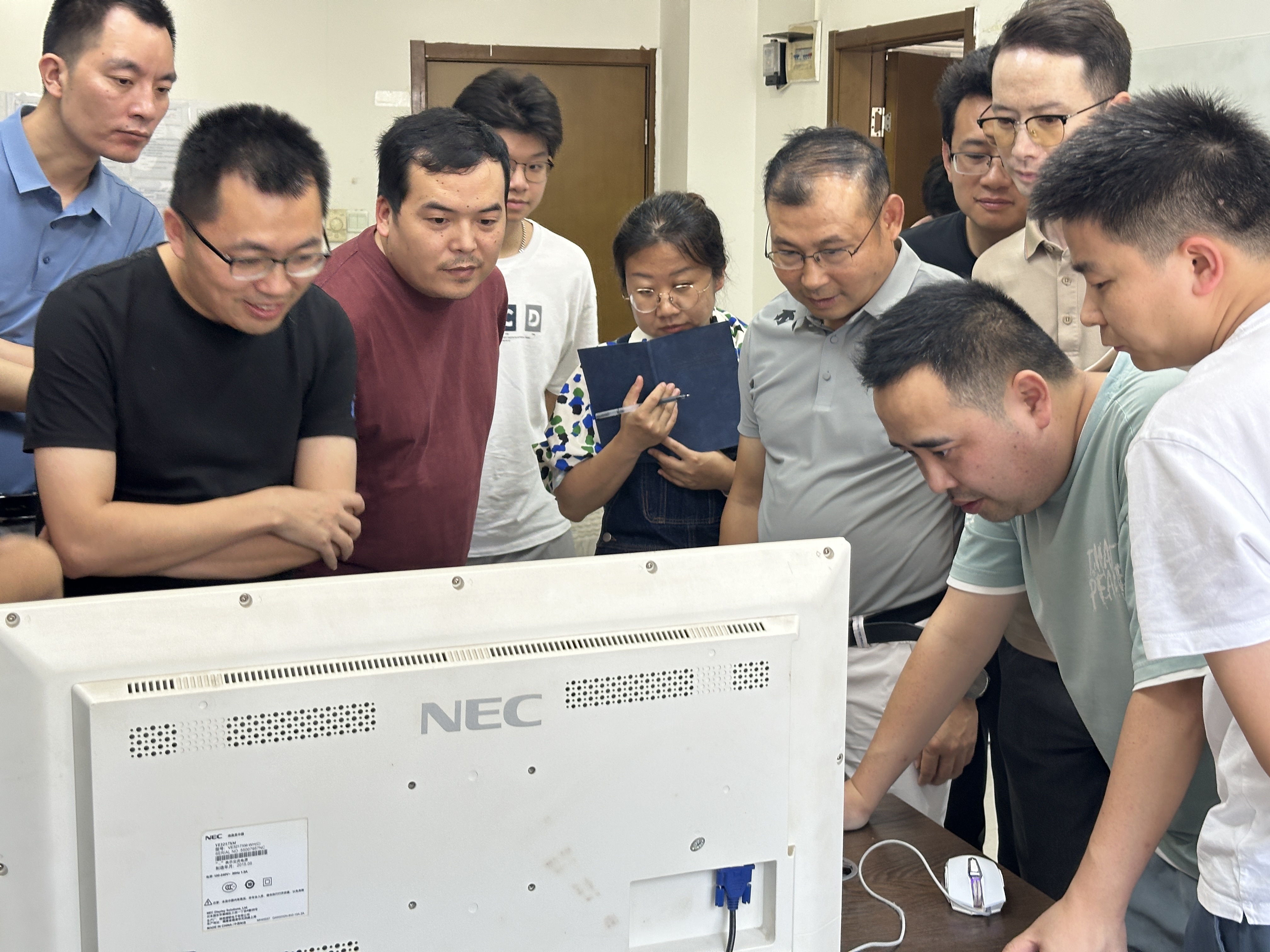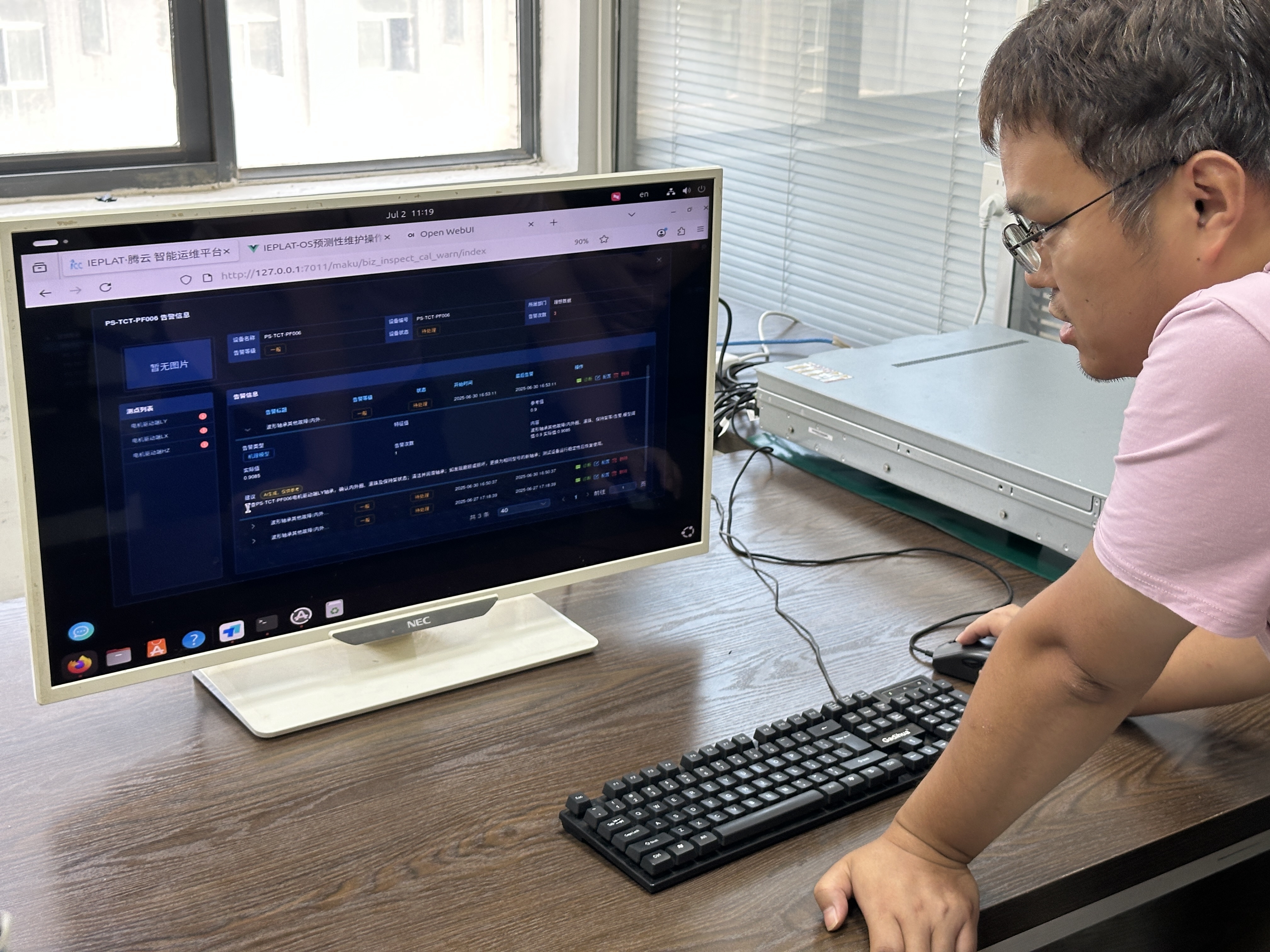The "Intelligent Guardian" of Industrial Equipment Maintenance: How Does the Zhongyun Equipment Management Integrated Machine Solve the Problems of Equipment Maintenance?
Release time:2025-07-03
Recently, the company organized the R&D department and the business team to participate in the trial use of the "Equipment Management Integrated Machine" independently developed by Zhongyun. Although only briefly exposed, this unassuming industrial equipment has given us a more concrete understanding of the future of industrial predictive maintenance with its clear functional logic and solid technical strength.
I. Why is it needed? The "three mountains" of traditional maintenance
At the beginning of the trial, the R&D manager used a set of industry pain points to point out the significance of the equipment management integrated machine: Industrial enterprises have long faced "three difficulties" in equipment maintenance—high cost of regular maintenance and easy to fall into the dilemma of "over-maintenance" or "insufficient maintenance"; passive maintenance after failure leads to long downtime, directly affecting production continuity; complex equipment systems rely on manual experience judgment, and the accuracy and response speed of diagnosis are limited.
"These problems are essentially a disconnect between 'data' and 'decision-making,'" the manager added. "In the era of Industry 4.0, enterprises need not 'tools for repairing equipment,' but 'brains that understand equipment.'" The emergence of the equipment management integrated machine is to fill this gap.
II. Vertical expert model vs. general large model
Different from the "multi-domain generalization" of general large models (such as DeepSeek), the core advantage of the equipment management integrated machine lies in "vertical specialization." Its diagnostic expert model is specifically designed for equipment predictive maintenance and specifically addresses the particularity of industrial equipment data:
- Higher accuracy: In the fault prediction test of similar equipment, the accuracy of this vertical model reaches 95%, an 8% increase compared to general large models, which is more in line with the industrial scene's requirement for "high reliability";
- Faster adaptation: It can quickly adapt to the sensor data of new equipment (such as temperature, vibration, current, and other multi-source time-series data), automatically adjust parameters, and does not require manual retraining;
- More timely response: Under the same hardware conditions, the data processing speed is increased by 30%, and fault analysis can be completed within 3 seconds, outputting a comprehensive diagnostic report including reasons, maintenance suggestions, and historical cases, meeting the high requirements of industrial production for "immediacy".
This "specialized" technical positioning allows it to demonstrate advantages in core scenarios such as equipment status monitoring and fault warning that cannot be replaced by general models.
III. Full-link coverage from "monitoring" to "decision-making"
In the on-site demonstration, the functional design of the "equipment management integrated machine" showed strong scene adaptability:
- Real-time monitoring, data as insight:
By accessing the full amount of sensor data from the equipment (temperature, vibration, audio, pressure, etc.), the integrated machine uses Faiss storage technology to build an embedded vector library of equipment information, which can quickly retrieve real-time status and historical records. Users only need to enter instructions to generate multi-dimensional analysis reports containing the full amount of equipment data (supporting PDF export), and the equipment health status is clear at a glance.
- Intelligent assistant, a "thinking" diagnostic consultant:
The intelligent maintenance assistant not only answers complex questions in the field of equipment diagnosis (such as "the reason for the continuous rise in temperature of XX equipment"), but also combines the enterprise's exclusive knowledge base (including historical maintenance records, industry standards, etc.) to provide "tailor-made" suggestions. The system will also automatically pop up equipment abnormality warnings, realizing "active reminders" rather than "passive inquiries".
- Maintenance guidance, from diagnosis to implementation:
After the equipment alarm is confirmed, the integrated machine will automatically generate a work order and output the specific cause of the fault (such as "heat dissipation module abnormality") based on the equipment type, alarm level, and historical data. At the same time, the model combines the full amount of equipment information, maintenance records, and domain knowledge to provide step-by-step maintenance guidance (such as "check the speed of the heat dissipation fan" and "clean the filter screen dust"), reducing reliance on manual experience.
IV. Deep empowerment from "tools" to "ecosystem"
For industrial enterprises, the value of the "equipment management integrated machine" is far more than just "repairing equipment," but also lies in the reshaping of the maintenance ecosystem:
- Reduce costs and increase efficiency: By providing 3-7 days of advance fault warning, equipment downtime can be reduced by 40%, and maintenance costs can be reduced by 35%;
- Ensure production: Real-time monitoring and intelligent early warning avoid sudden downtime, ensuring production continuity and indirectly improving order delivery rate;
- Knowledge accumulation: The accumulated equipment health data and maintenance experience form the enterprise's "maintenance knowledge assets," providing data support for subsequent intelligent upgrades;
- Safe and controllable: The locally deployed large model visualization interface displays key indicators such as computing power usage and response delay in real time, without relying on the cloud, ensuring both data security and decision-making autonomy.
"The significance of this machine is that the 'health records' of each piece of equipment can be accurately recorded and analyzed. When 'predictive maintenance' changes from 'optional' to 'standard,' we are one step closer to the era of intelligent maintenance with 'zero downtime and zero waste.'"
From the "passive response" of traditional maintenance to the "active management" of intelligent maintenance, Zhongyun's equipment management integrated machine uses "data + algorithm" as its core, injecting "understanding equipment, thinking, and decision-making" intelligent genes into industrial equipment maintenance. For industrial enterprises, it is not only a "machine" but also a "reliable maintenance partner".
Related news
Make industry smarter and equipment healthier
Service Hotline
+86-27-6349 9950
Contact Information
Email: administrator@hbicc.com
Address: No. 6, Fozulingle Third Road, East Lake High-tech Development Zone, Wuhan, Hubei Province









